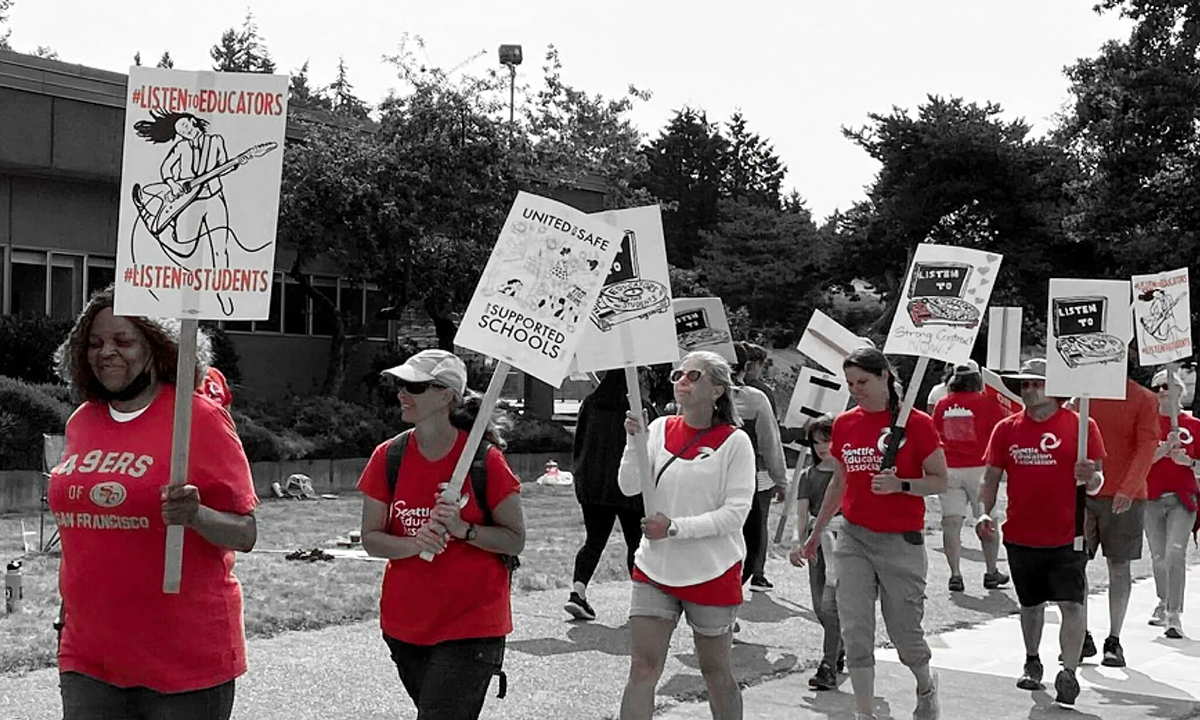Open Collective Bargaining — Something Everyone Can Agree On?
Open bargaining may be the only public education issue whose supporters include the most militant teachers unions and the staunchest union critics

Get stories like these delivered straight to your inbox. Sign up for The 74 Newsletter
Two parent groups in Oakland, California, want greater input into how the school district is run. They have correctly identified one crucial area where public participation is not only discouraged, but actively shut down: collective bargaining.
Both CA Parent Power and Oakland REACH introduced a resolution to the school board that would give parents “ongoing opportunities for public expression on labor agreement proposals.”
In California, open contract negotiations between school districts and unions can occur only if both parties agree. It looks like it could happen in Oakland.
“We support parents at the bargaining table,” said Kampala Taiz-Rancifer, second vice president of the Oakland Education Association.
District and union officials alike across the country have long resisted opening up the collective bargaining process to public scrutiny, never mind participation. Reasons range from a fear of posturing on the part of negotiators to a loss of control over the proceedings. I suspect the real reason is that closed-door bargaining enables each side to construct its own narrative about what the other side is up to.
“Only those at the table know what really transpires, and either side can be and usually is painted as villainous,” explained one school superintendent.
But open bargaining may be the only public education issue whose supporters include both the most militant teachers unions and the staunchest union critics.
Like the Oakland parent groups, union opponents such as the Illinois Policy Institute, the Freedom Foundation and the Empire Center for Public Policy all see closed bargaining as a way for officials on both sides to work out inside deals, then present the public with a fait accompli.
This occurred most recently in Seattle, where, after a week-long strike, teachers and the public both complained of a lack of transparency. Only after teachers ratified the agreement did district officials wonder how they would come up with $91.4 million to pay for it.
Closed negotiations are still the norm in most school districts, but the doors are slowly creaking open. Progressive unions and their allies are among the most prominent advocates of this exposure. Granted, their motives are self-serving, but that doesn’t automatically make it a bad idea. These unions are convinced citizens would be wholeheartedly on their side if they were present at negotiations.
Colorado voters approved a ballot measure 70% to 30% in 2014 that opened public-sector bargaining across the entire state. Though initially opposed, the Colorado Education Association has since embraced the new transparency, using negotiations as a way to rally members and the public to its cause.
“We want to be open and transparent with the community and public. Having that open bargaining allows for those conversations to take place,” said union Vice President Amie Baca-Oehlert.
The Chicago Teachers Union asked for open bargaining and got it, with sessions available on a livestream.
Local teachers unions in Maryland, Massachusetts, Minnesota, Oregon and Washington all pushed for open bargaining, and all for the same reason: to use it as an organizing tactic.
In Brookline, Massachusetts, the union brought more than 100 rank-and-file members to negotiation sessions to witness “management’s blatant bad-faith bargaining.”
In Minnesota, the St. Paul Federation of Teachers went a step further. It brought 50 teachers, dressed them in union T-shirts and “prepped them for their role,” according to the union’s secretary at the time. They were allowed to speak in support of the union’s proposals for special education.
Merrie Najimy was president of the Concord Teachers Association when the union pushed for open bargaining. She later became president of the Massachusetts Teachers Association. “When they see the outrageous behavior of the other side and the dignified behavior of the teachers, as well as [our] visionary proposals, that’s where you win,” she said.
Jane McAlevey is a senior policy fellow at the UC Berkeley Labor Center who has long advocated for open bargaining as a way to increase member support. She believes open bargaining is a way for a union to display its trust in its members.
“Too many officials have very little faith in the intelligence of ordinary workers who could be involved in the union,” she said. “They’ll just say to me, ‘How did you control everybody?’ It’s always about control.”
It’s important to specify that “open bargaining” is a catch-all term, and there are various steps along the spectrum. Some districts simply make bargaining proposals public as they occur. Others allow silent, in-person public observation. Others, like Chicago, add online streaming. Formal public input while negotiations are ongoing is very rare.
Still, more sunshine is better than less. No one should be put off because unions might use open bargaining to manipulate public opinion to their cause. School district officials represent the public at the bargaining table. If they don’t trust the public to observe, never mind to participate, they should seek other employment.
Mike Antonucci’s Union Report appears most Wednesdays; see the full archive.
Get stories like these delivered straight to your inbox. Sign up for The 74 Newsletter

;)